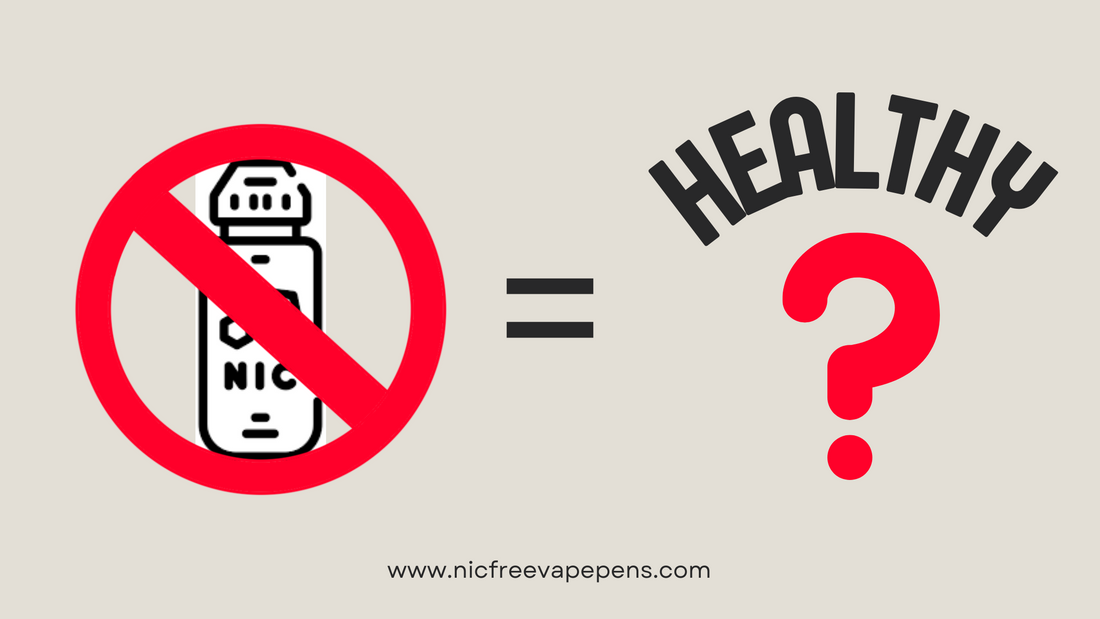Vaping is the process of heating e-liquid in an electronic e-cigarette device to create vapor. The most popular e-cigarettes are filled with nicotine. Nicotine is an addictive chemical that can be vaped, smoked, chewed, or applied topically. Nicotine, regardless of how it’s taken, poses risks. Certain forms of nicotine ingestion (smoking and vaping) are more dangerous than others (oral and topical). However, scientific studies suggest show that the most serious vaping dangers come from synthetic chemicals found in both 0% and nicotine-infused electronic cigarettes. The vape community has been eagerly waiting for a healthier e-juice option to avoid e-cigarette side effects.
Is vaping without nicotine bad for you?
Many companies claim that nicotine free vaping products are safe. These claims are inaccurate and misleading. Smoking and vaping ANYTHING is deleterious for one’s health. When you inhale chemical-fueled vapor or smoke into the lungs, it poses several health risks, regardless of whether the liquid contains nicotine or not. While many businesses unethically state that 0% nicotine vapes are harmless, this is far from true.
Nicotine Free Vaping Benefits
The most obvious benefit of going nicotine free is that it eliminates the addictive property. Another advantage of no nicotine e-juice is that it doesn’t contain benzoic acid. Benzoic acid is used to make salt nicotine. When heated and inhaled, the benzoic acid forms benzene. Benzene is carcinogenic.
Dangers of Vaping
Learn about the risks of vaping. The negative effects of using vaporizers apply to both nicotine and non nicotine e-cigarettes.
Toxicity
Several chemicals found in e-liquid can be toxic. For example, a 2015 study on vaping discovered that the heating of propylene glycol and glycerol in e-liquid releases formaldehyde. Propylene glycol can be seen on the ingredient list of almost all disposable vapes. Another study on using e-liquid concluded that vaping is less dangerous than cigarettes. However, the urine samples of those who vaped contained higher amounts of toxic chemicals versus those who did not, including:
- acrylonitrile
- acrolein
- acrylamide
- crotonaldehyde
- propylene oxide
Blood Vessel Changes
31 healthy non-smokers were asked to inhale zero nicotine vape liquid. After one use, an MRI detected blood vessel changes, which represent the beginning stages of cardiovascular disease. This shows that vaping, even without nicotine, impacts short-term blood vessel function in healthy individuals. However, consistent use may have longer-term consequences according to Felix W. Wehrli, professor of radiologic science and biophysics at the University of Pennsylvania’s Perelman School of Medicine.
Throat and Lung Irritation
Inhaling vapor can cause immediate inflammation in the throat and lungs. Many vape-users describe a tingly and burning feeling in their throat as a “throat hit.” This sensation is a result of heating and inhaling chemicals found in most e-liquids. The 2015 vaporizer study mentioned above stated that a single puff can irritate the airways.
Inflammation
In 2018, a study on vape pens showed that common e-liquid flavorings caused harmful inflammation to lung cells. Consistent lung inflammation can lead to scarring. Although more research and long-term studies are required, early evidence suggests that e-liquid flavoring is harmful for the lungs.

